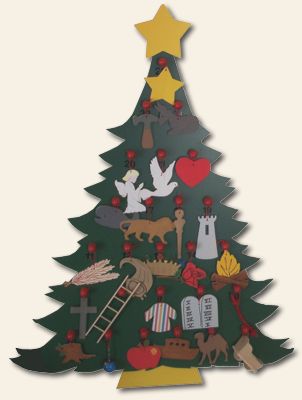 Of all the seasons of the church year, the first – Advent – is definitely the one that leaves me feeling most out of touch with my fellow Americans.
While everyone else is frantically shopping, decorating, partying, those Christians who mark Advent are in a period of preparation and prayerful contemplation. The disciplines of Advent include confession and repentance, prayer, immersion in Scripture, fasting and the singing of the Great O Antiphons and other seasonal hymns. I'm fond of "Lo, He Comes With Clouds Descending," "The Angel Gabriel from Heaven Came," "Savior of the Nations, Come" and many, many more. Advent may, in fact, be the best season of the church year when it comes to hymnody.
Of all the seasons of the church year, the first – Advent – is definitely the one that leaves me feeling most out of touch with my fellow Americans.
While everyone else is frantically shopping, decorating, partying, those Christians who mark Advent are in a period of preparation and prayerful contemplation. The disciplines of Advent include confession and repentance, prayer, immersion in Scripture, fasting and the singing of the Great O Antiphons and other seasonal hymns. I'm fond of "Lo, He Comes With Clouds Descending," "The Angel Gabriel from Heaven Came," "Savior of the Nations, Come" and many, many more. Advent may, in fact, be the best season of the church year when it comes to hymnody.
The season is marked by millions of Catholics, Lutherans, Episcopalians and many other Christians, but not only do you rarely see any media coverage of it, the media actively promotes the secular version.
Advent ends on Christmas Eve with the beginning of the Christmas season. In America, the end of Advent coincides with the end of the secular Christmas season/shoppingpalooza. Just as my family is putting up Christmas trees and lights and buying gifts for friends and family, much of the rest of America is experiencing the post-Christmas hangover.
So I was elated to see Ben Smith's coverage of Advent in the Atlanta Journal-Constitution. He introduces Kim Welch, who doesn't "do Santa" and Pamela Lichtenwalner, who will send her Christmas cards out today. On. Purpose.
Welch and Lichtenwalner are two of a minority of Christians, among them Anglicans, Catholics and Lutherans, who celebrate a traditional 12-day Christmas season.
These observers don't rush to the malls on Black Friday or buy and decorate trees the weekend after Thanksgiving. They tend to avoid mid-December Christmas parties. They try to ignore the storefront Santa displays and loudspeakers prematurely blaring "Silent Night."
On Dec. 26 you won't find trees in their garbage cans.
"I am always sad when I see people out on Christmas afternoon taking down their lights and dragging their Christmas trees out to the curb for pickup," said Bishop J. Neil Alexander of the Episcopal Diocese of Atlanta. "The 12 days of Christmas begins, not ends, on Christmas Day."
Smith briefly explains how the Advent and Christmas seasons work on the liturgical calendar. He even throws in a mention of Epiphany:
Lichtenwalner says she delays bringing out the Christmas decorations until after the third week of Advent. Welch, who lives in Alpharetta with her husband, Ron, and their four sons, observes another tradition by keeping a small "Jesse Tree" during December. Her sons take turns adorning it with an Old Testament ornament every day during Advent.
Alexander, who typically doesn't raise and decorate a tree until Christmas Eve, believes "keeping the great feast of the Nativity and incarnation in celebration is far more meaningful than the seasonal rat race of preparing to give things to each other most of us don't really need."
I would love to know more about this Jesse Tree (pictured). Some people might get the reference to Isaiah but I'm not sure if the practice is common enough to put in a story without more explanation. People interested in the topic of Advent celebrations should look for Terry's upcoming column on the matter in their newspapers or here.
Much of the story highlights the difference between the commercialism of the American Christmas with the solemnity of Advent, but it gives the impression that Christmas gifts are minimal for those of us that keep the seasons and keep them separate. At least among Lutherans, this is really not the case. For better or worse, I've never seen much of a difference between the two groups when it comes to Christmas giving. My daughter will be showered with a ridiculous amount of gifts – they'll just not be as much of a focus and they'll be spread out over the entire Christmas season.
Anyway, it's just great to see a story about this important season and how it is marked by liturgical Christians.
